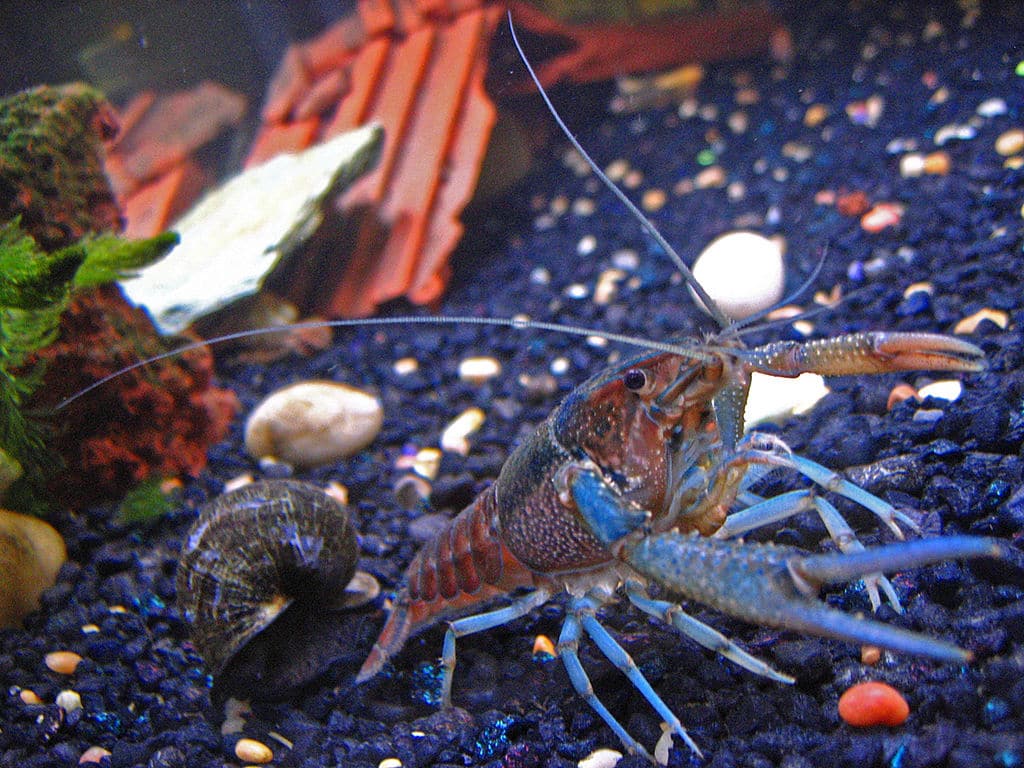
However, they’re one of the few algae eaters that can not only live in, but prefer, cooler water, which makes them a great choice for pond owners with cooler weather throughout the entire year. Loaches don’t consume as much algae as species such as certain plecos since they are opportunistic feeders that will also eat insects, plant matter, and food pellets.

They can grow up to a foot in length and prefer to live in small groups, although they should be fine in a community of other species so long as they’re docile. They’re quite hardy fish, able to live in waters ranging from about 40 to 77☏, and are well-suited for beginner ponders.

If you’d rather not worry about having to transfer your algae-eater inside for the winter, a pond loach (also known as the dojo loach or weather loach) may be more suited to you. Q: Will they Eat Algae in Ponds? – Yes, conservatively. Photo by Manoel Jr., CC BY-SA 2.0, via Wikimedia Commons They’re suitable to be kept with common goldfish and koi, and would make a good addition to most ponds if you can accommodate their warmer temperature requirements, or if you live in a warm climate all year round.ģ) Pond Loach ( Misgurnus anguillicaudatus) Pond loaches will readily eat algae off of plants and rocks.
#Bottom feeder fish name full#
They often live full lives spanning up to 10 years, but require water to be kept between approximately 70 and 79☏ and will need to be transferred to an indoor tank during the winter. A rather spirited and social species growing up to 6 inches long, they may not pair well with smaller or more docile fish, such as guppies, minnows, or smaller catfish. They’re not picky eaters, and will happily eat all types of algae, from string algae and algae clumps to red algae that many other fish species shy away from. The Siamese algae eater belongs to the freshwater carp family and, as its name implies, is one of the most popular and adept algae consumers for freshwater environments. They’re a tropical fish hailing from South America, and so they will have to be brought in for the winter if your pond’s temperature falls below 50☏.Ģ) Siamese Algae Eater (Crossocheilus Oblongus) Siamese algae eaters are known for eating algae. Try to only have one pleco per 1,000 gallons of water, particularly if you have one of the larger varieties of the fish. Plecos are easygoing and peaceful, getting along well with most other fish species, though they do best in environments where they’re the only of their kind. The common pleco (pictured) is one of the largest species at 1-2 feet long, and so logically will eat more algae than the 4 inch bristlenose pleco, which is another popular pond choice. As mentioned in a previous article about mosquito control, a single adult plecostomus can eat a huge amount of string algae per 1,000 gallons of water, though this does depend on the species of pleco and how much other other food they’re being given. Q: Will they Eat Algae in Ponds? – Yes, readily.Īs a pond owner, a pleco can quickly become your best friend, particularly if you live in a temperate region where algae is more likely to thrive. Making use of an automatic feeder can be helpful in these situations to carefully monitor dosage and frequency.ġ) Common Pleco (Hypostomus plecostomus) Common plecos are bottom feeders that will graze heavily on algae. Plus, fewer supplemental feedings for your fish means that they are more likely to feed on any algae that is present. Any uneaten food will add nutrients to the water, further encouraging algal growth. Although no pond fish will likely be able to fully control a rapid algae bloom (more on this later), they’re a great natural method for reducing it’s growth alongside more traditional means.īefore we get to the best algae eaters, it should be noted that when feeding your fish, make sure that you are not feeding them any more than they can eat within a five minute span.


Utilizing various pond fish, like the ones discussed below, is an environmentally friendly, simple way to ensure that algae populations are kept at a balanced, sustainable level. If allowed to grow out of control, however, algae can kill everything in your pond as it uses up all of the nutrients and dissolved oxygen content. In fact, when properly controlled, having some green algae (not the blue-green kind) in your garden pond is actually considered healthy and necessary for aquatic ecosystems as they will photosynthesize, produce oxygen, and provide a natural food source for many fish, insects and wildlife species. The presence of algae in your pond doesn’t have to be a bad thing. 1.9.1 Are Pond Fish Enough to Control All Algae? Although algae is not a primary food for many pond fish, most species will still consume small amounts when available.


 0 kommentar(er)
0 kommentar(er)
